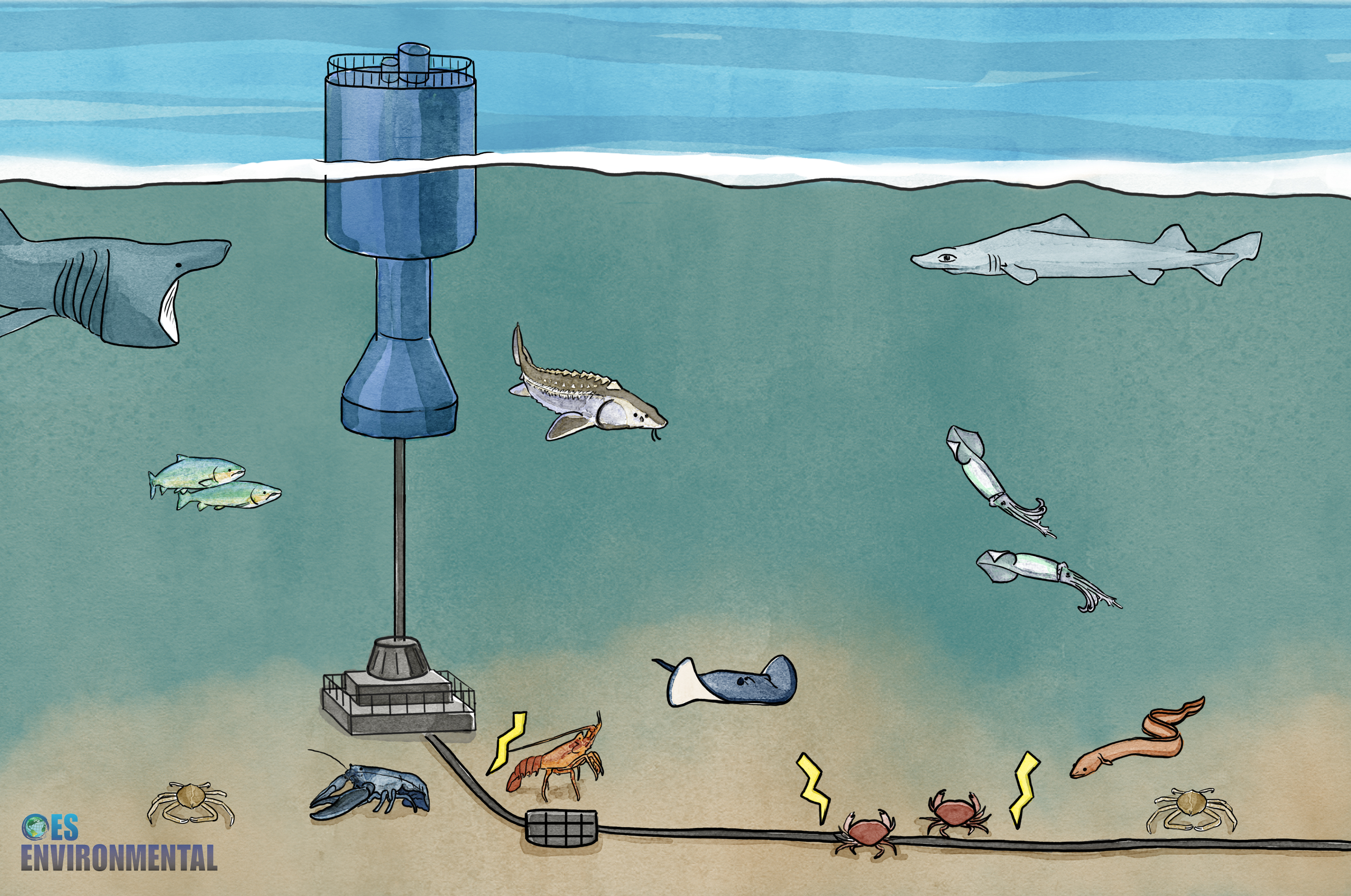Abstract
The guidance documents are intended to be available for regulators and advisors as they carry out their decision-making and for developers and consultants as they prepare consenting and licensing applications. This stressor-specific document presents an overview of the scientific information that is known for electromagnetic fields. It is not intended to replace any regulatory requirements or prescribe action for a particular risk. This document is intended to be read in conjunction with the background document.
Anthropogenic electromagnetic fields (EMFs) are emitted from various types of infrastructure in the marine environment such as subsea cables for power and communications, bridges, and tunnels. Marine renewable energy (MRE) systems emit EMFs from power cables, moving parts of devices, and subsea substations/transformers. These EMFs may affect sensitive species at individual or population levels by causing animals to be attracted to or avoid areas, and/or by interfering with natural magnetic fields used for orientation, navigation, and hunting. This includes some species of elasmobranchs, crustaceans, cetaceans, fish, and sea turtles.

The evidence base to date suggests that the impacts of EMFs from small-scale MRE developments are limited, and the risk to EMF-sensitive species is low. Laboratory and field studies indicate that EMFs are unlikely to harm sensitive species at the levels emitted from MRE power cables. Overall, there is a general consensus among the scientific community that EMFs from small-scale MRE developments are not harmful and do not pose a risk to marine animals, and therefore should not inhibit the installation of devices or require extensive monitoring.
Check out the links within the stressor-specific guidance document for EMF for additional tools, resources and information.
